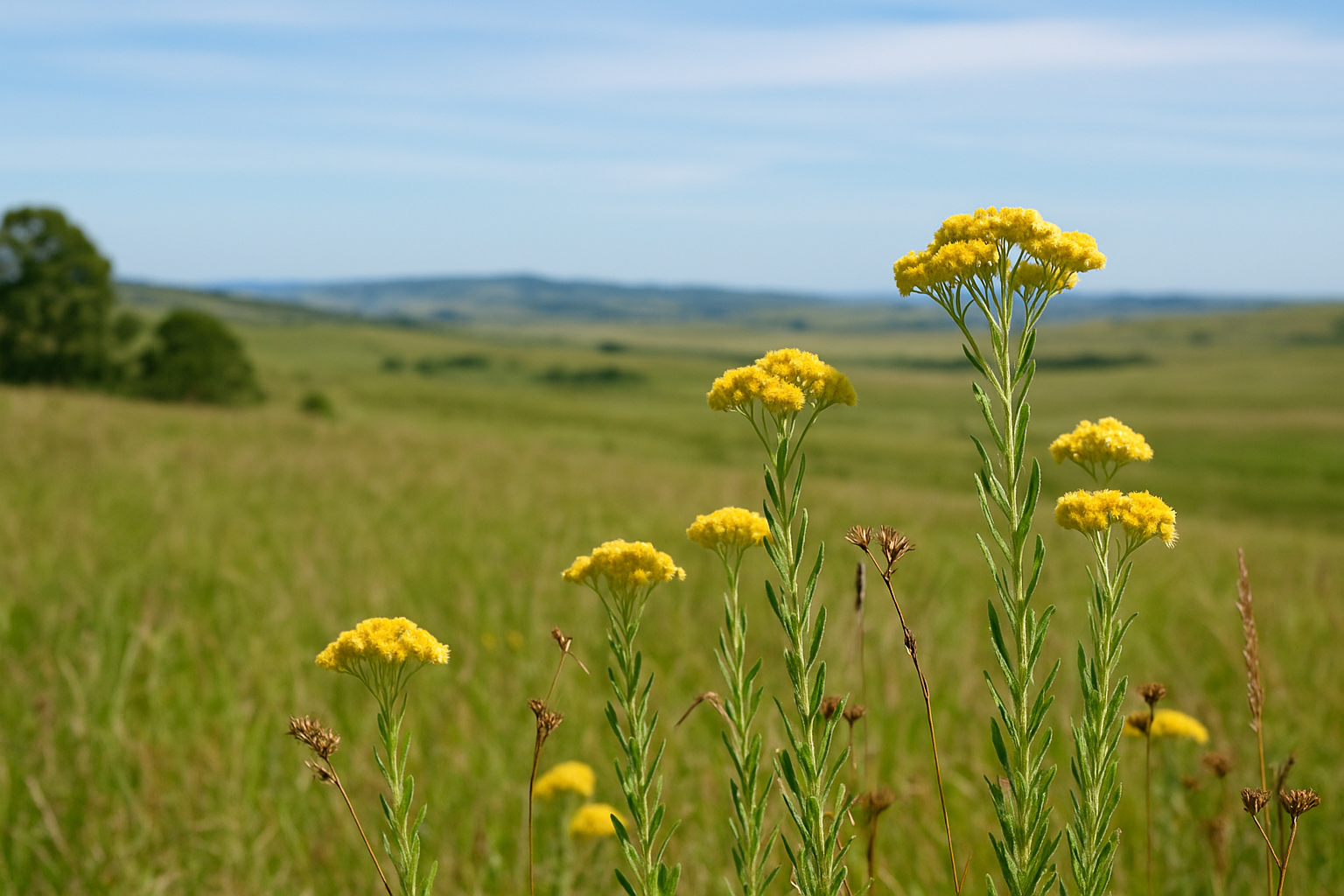Introduction
The Pampas, with its wide horizons, strong winds, and fertile soils, is more than a landscape.
It is a cultural cradle where plants have shaped identity, healing practices, and daily life. Gaúcho herbs—marcela, rosemary, boldinho, guaco, carqueja, and sage—carry stories that belong to both land and people.
For centuries, families have used these herbs in teas, sprays, sachets, and smoke.
Their scents have guided celebrations, marked thresholds, healed bodies, and connected generations. Today, they continue to embody resilience and cultural heritage.
This article explores the legacy of Gaúcho herbs in the Pampas: their historical use, symbolism, and modern adaptation. It shows how fragrance and tradition are inseparable, preserving identity across time.
The Pampas as herbal landscape
The Pampas is an open plain stretching across Southern Brazil, Argentina, and Uruguay. Its biodiversity includes medicinal and aromatic plants adapted to strong winds and temperate climate. Families learned to read the land: which herbs calmed, which cleansed, which protected.
Marcela grew abundantly in fields, harvested at dawn in spring. Rosemary thrived in gardens and kitchens. Boldinho sprouted in corners near houses. Guaco climbed fences, waiting for winter colds. Carqueja covered fields with bitter resilience. Sage, though not native, was adopted into rituals. Each plant became part of daily rhythms.
Historical uses of Gaúcho herbs
Marcela
Collected during Easter dawn walks. Used in teas for calm and sprays for sleep. Symbol of hope and renewal.
Rosemary
Planted near doors and kitchens. Used for memory, focus, and protection. Sprigs tied to tools symbolized endurance.
Boldinho
Prepared as digestive tea after meals. Its freshness symbolized cleansing and balance.
Guaco
Boiled for syrups during coughs. Its steam filled rooms with comfort. Symbol of compassion.
Carqueja
Bitter teas used for strength and discipline. Also dried for sachets in drawers. Symbol of grounding.
Sage
Burned for smoke cleansing after gatherings. Adopted into Gaúcho culture as symbol of closure and renewal.
These uses show that herbs were not marginal—they were central to life in the Pampas.
Symbolism as legacy
Herbs carried meaning beyond chemistry. Marcela was not only a sedative; it was hope renewed each Easter. Rosemary was not only stimulating; it was memory preserved. Boldinho was not only digestive; it was care after meals. Guaco was not only bronchodilator; it was compassion in sickness. Carqueja was not only bitter tonic; it was discipline. Sage was not only antimicrobial; it was closure of cycles.
This symbolism became cultural DNA. Families repeated it until herbs and identity became inseparable.
Rituals of legacy
Daily rituals
Spraying marcela on linens, simmering boldinho after meals, diffusing rosemary during study. These acts continue traditions of care.
Weekly rituals
Burning sage or spraying sage blends on Sundays. Replacing carqueja sachets in drawers. Cleaning with rosemary-infused water.
Seasonal rituals
Collecting marcela in spring, preparing guaco syrups in autumn, using carqueja teas in winter, refreshing boldinho sprays in summer. These align herbs with nature’s cycles.
Ritual repetition ensured that legacy was not abstract but lived daily.
The legacy in family memory
Children in Gaúcho families grew up with these smells. They associated marcela with bedtime, rosemary with kitchens, guaco with care during illness. These memories became emotional anchors. As adults, they repeated them, carrying heritage forward.
Even in modern apartments, spraying marcela or diffusing rosemary triggers ancestral memory. Fragrance becomes the bridge between past and present.
Modern adaptation of Gaúcho herbs
Today, sprays, diffusers, and oils make herbs accessible beyond fields. Marcela oils are used in sleep blends. Rosemary diffusers sharpen focus in offices. Boldinho sprays refresh kitchens. Guaco tinctures comfort winter homes. Carqueja sachets ground drawers. Sage sprays cleanse apartments.
Technology does not erase tradition. It translates it. The meaning remains, even if the form changes.
Recipes honoring legacy
Marcela Renewal Spray
- 7 drops marcela oil
- 3 drops guaco oil
- 100 ml water + 1 tsp alcohol
Spray linens to continue Easter tradition of calm and renewal.
Rosemary Memory Diffuser
- 6 drops rosemary
- 4 drops carqueja
Diffuse in offices to honor ancestral sprigs at thresholds.
Boldinho Kitchen Freshener
- 5 drops boldinho
- 3 drops rosemary
- 100 ml water
Spray kitchens after meals to symbolize cleansing.
Guaco Comfort Steam
- 1 tbsp guaco leaves
- 500 ml boiling water
Let steam fill rooms during winter. Symbol of compassion.
Sage Closure Ritual
- 1 small sage bundle
Burn weekly to honor closure of cycles.
Emotional power of legacy
Fragrance rituals strengthen resilience. They teach continuity in times of stress. They provide comfort in grief, renewal in fatigue, and joy in celebration. Legacy is preserved not through museums but through everyday air.
Children raised with these rituals inherit more than health—they inherit identity. Guests entering Gaúcho homes sense invisible heritage. Communities preserve culture through shared smells.
Mistakes that weaken legacy
Do not reduce herbs to decoration. They are cultural language.
Do not abandon rituals. Without repetition, meaning fades.
Do not overload blends. Simplicity reflects clarity of tradition.
Do not forget storytelling. Children must know why herbs matter.
Long-term cultural impact
Over generations, Gaúcho herbs have preserved identity despite change. They survived migration, urbanization, and modern pressures. Their legacy lives in sprays, sachets, teas, and diffusers.
Fragrance rituals keep culture breathing. They ensure that marcela, rosemary, boldinho, guaco, carqueja, and sage remain not only plants but heritage.
Conclusion
The legacy of Gaúcho herbs in the Pampas is not only botanical but cultural. These plants carried healing, symbolism, and identity across generations.
Their fragrances became rituals, their rituals became traditions, and their traditions became heritage.
Modern homes adapt rituals into sprays, diffusers, and oils, but the meaning remains. Fragrance is heritage alive in air. By practicing rituals daily and seasonally, Gaúcho families preserve culture, resilience, and identity in modern times.

Marcela Cardozo is passionate about Southern Brazilian traditions and the cultural stories carried through natural scents. She blends knowledge of native herbs, essential oils, and regional rituals to create practical and inspiring content. Her writing connects ancestral wisdom with modern living, offering readers simple ways to bring authenticity, well-being, and meaning into their everyday lives.
